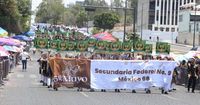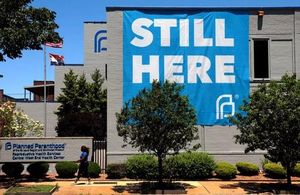Every year on May 5, the United States transforms into a vibrant celebration of Mexican culture, particularly in honor of the historic Battle of Puebla that took place in 1862. Known as Cinco de Mayo, this day is marked with festivities featuring guacamole, fajitas, mariachi music, and an abundance of margaritas and beer, showcasing a rich cultural heritage that has become a staple in American society.
While Cinco de Mayo commemorates a significant military victory for Mexico, it is often confused with Mexican Independence Day, which is celebrated on September 16. The Battle of Puebla is a symbol of resilience and national pride, representing the triumph of a smaller, under-equipped Mexican army, led by General Ignacio Zaragoza, against French forces. This year, celebrations in the U.S. are expected to be especially robust, reflecting the enduring legacy of this historic event.
The Battle of Puebla occurred on May 5, 1862, when French troops, under the command of Napoleon III, invaded Mexico amid a backdrop of economic turmoil. President Benito Juárez had suspended payments on foreign debts, prompting France to send a military contingent to enforce its interests. Zaragoza, commanding a mere 2,000 Mexican soldiers, faced off against an invading force of approximately 6,000 French troops. Against all odds, the Mexican forces secured a stunning victory, with French casualties exceeding 500 compared to around 100 for the Mexicans.
In 1999, the Texas Senate recognized Goliad as the official site to celebrate Cinco de Mayo, honoring Zaragoza's birthplace, which is approximately 10 kilometers north of Corpus Christi. This recognition has led to vibrant celebrations in Goliad, featuring live music, folkloric dances, and barbecues, fostering a sense of pride in the community. Emilio Vargas, a former justice of the peace, remarked to the Victoria Advocate that the celebrations have opened a new perspective for Goliad, emphasizing the importance of continuing traditions for future generations.
Across the United States, Cinco de Mayo has evolved into one of the top five days for alcohol consumption, with major festivals attracting hundreds of thousands of attendees. For instance, Chicago's Douglas Park festival draws about 200,000 people, while Denver's celebration attracts around 400,000 over two days. Portland, Oregon, and St. Paul, Minnesota, also host large gatherings, with St. Paul boasting a significant Latino population that has roots tracing back to early 20th-century Mexican immigration.
In St. Paul, known as District del Sol, the Cinco de Mayo festival lasts two days, celebrating the rich cultural contributions of the Latino community. The neighborhood has over 25,000 Latino residents, making up roughly 10% of the city's population. This festival serves not only as a celebration of heritage but also as a reminder of the ongoing contributions of Latino communities throughout the U.S.
Interestingly, while Cinco de Mayo has deep historical roots in Mexico, its popularity has surged in the United States since the 1960s, largely due to Mexican-American activists promoting cultural pride. This has transformed the day into a celebration of community identity and solidarity, even as it has taken on commercial aspects.
In Mexico, May 5 is recognized as a civic holiday, particularly in Puebla, where the anniversary of the battle is celebrated with parades and reenactments. However, it is not a nationwide public holiday, and while schools are closed, banks remain open. The state of Puebla will celebrate the 163rd anniversary of the Battle of Puebla with a ceremony at the Mausoleum of General Ignacio Zaragoza at 10:00 AM, attended by local dignitaries, including Governor Alejandro Armenta.
The parade, expected to last about 95 minutes, will see streets closed from 7:30 AM until its conclusion. The event will feature the participation of 3,400 military personnel and representatives from 33 educational institutions, showcasing a blend of military respect and educational pride.
In the U.S., the celebration of Cinco de Mayo has reached the highest levels of government, with past presidents, including George W. Bush and Barack Obama, participating in White House events. However, the celebration faced challenges during Donald Trump's presidency, as he opted to skip the festivities, breaking with the tradition established by his predecessors. This decision sparked concerns within immigrant communities, especially amid heightened immigration enforcement.
Despite these challenges, the importance of Mexican culture in the U.S. remains evident. Approximately 38 million Mexicans live in the United States, contributing significantly to the economy. In 2024, it was reported that Mexicans born in the U.S. contributed $781 billion to the Gross Domestic Product (GDP), indicating the vital role they play in the nation’s economic landscape.
Moreover, undocumented immigrants contributed nearly $100 billion in taxes in 2022, including substantial amounts to Social Security and Medicare. These figures highlight the economic impact of the Mexican community, underscoring why celebrations like Cinco de Mayo are more than just parties—they are a recognition of cultural resilience, economic contributions, and the rich tapestry of American society.
As Cinco de Mayo approaches, it serves as a reminder of the historical significance of the Battle of Puebla and the ongoing celebration of Mexican culture in the U.S. Whether through lively festivities, culinary traditions, or community gatherings, this day encapsulates the spirit of unity and cultural pride that defines the Mexican-American experience.




